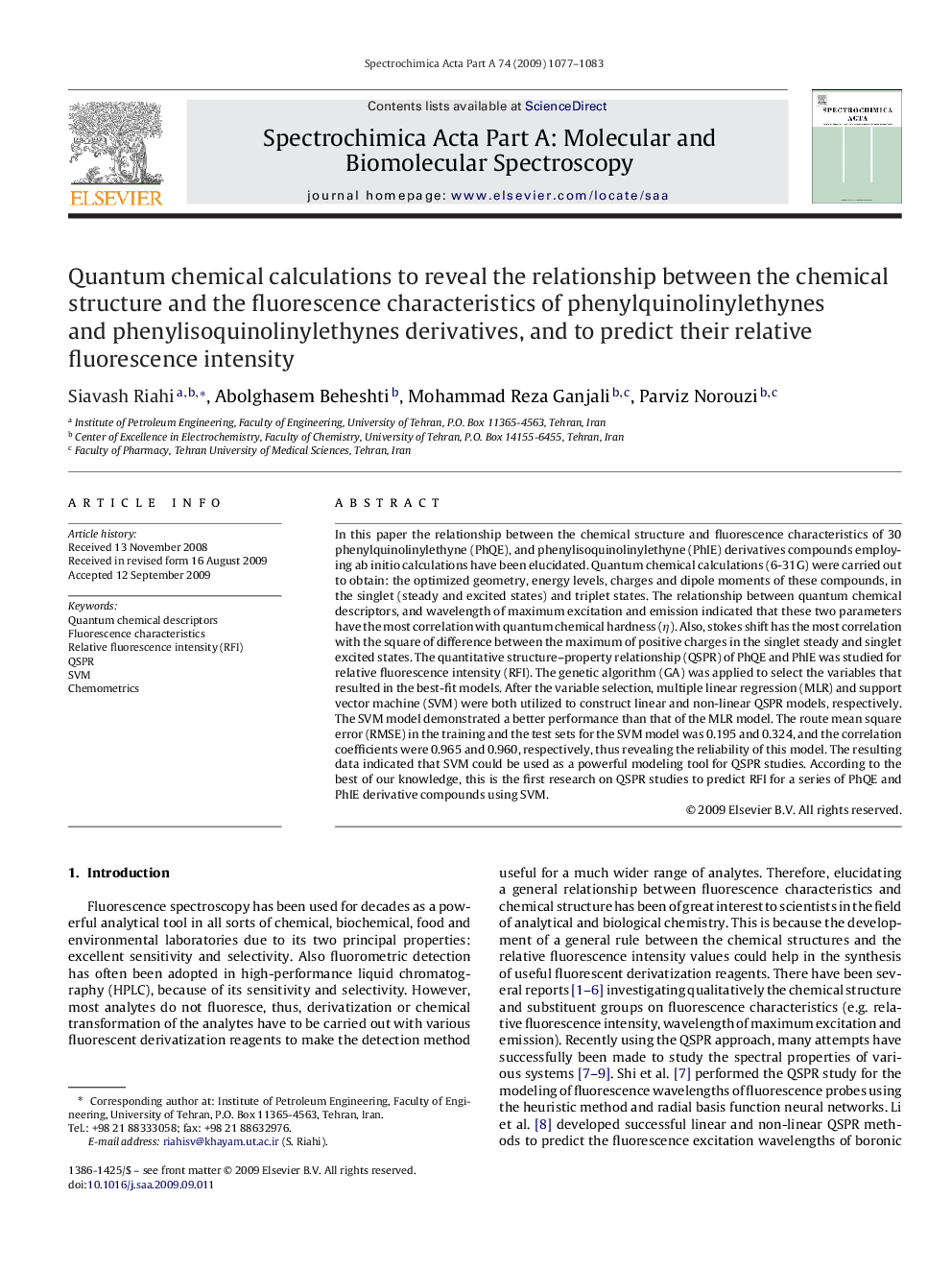| کد مقاله | کد نشریه | سال انتشار | مقاله انگلیسی | نسخه تمام متن |
|---|---|---|---|---|
| 1237350 | 968890 | 2009 | 7 صفحه PDF | دانلود رایگان |

In this paper the relationship between the chemical structure and fluorescence characteristics of 30 phenylquinolinylethyne (PhQE), and phenylisoquinolinylethyne (PhIE) derivatives compounds employing ab initio calculations have been elucidated. Quantum chemical calculations (6-31G) were carried out to obtain: the optimized geometry, energy levels, charges and dipole moments of these compounds, in the singlet (steady and excited states) and triplet states. The relationship between quantum chemical descriptors, and wavelength of maximum excitation and emission indicated that these two parameters have the most correlation with quantum chemical hardness (η). Also, stokes shift has the most correlation with the square of difference between the maximum of positive charges in the singlet steady and singlet excited states. The quantitative structure–property relationship (QSPR) of PhQE and PhIE was studied for relative fluorescence intensity (RFI). The genetic algorithm (GA) was applied to select the variables that resulted in the best-fit models. After the variable selection, multiple linear regression (MLR) and support vector machine (SVM) were both utilized to construct linear and non-linear QSPR models, respectively. The SVM model demonstrated a better performance than that of the MLR model. The route mean square error (RMSE) in the training and the test sets for the SVM model was 0.195 and 0.324, and the correlation coefficients were 0.965 and 0.960, respectively, thus revealing the reliability of this model. The resulting data indicated that SVM could be used as a powerful modeling tool for QSPR studies. According to the best of our knowledge, this is the first research on QSPR studies to predict RFI for a series of PhQE and PhIE derivative compounds using SVM.
Journal: Spectrochimica Acta Part A: Molecular and Biomolecular Spectroscopy - Volume 74, Issue 5, December 2009, Pages 1077–1083